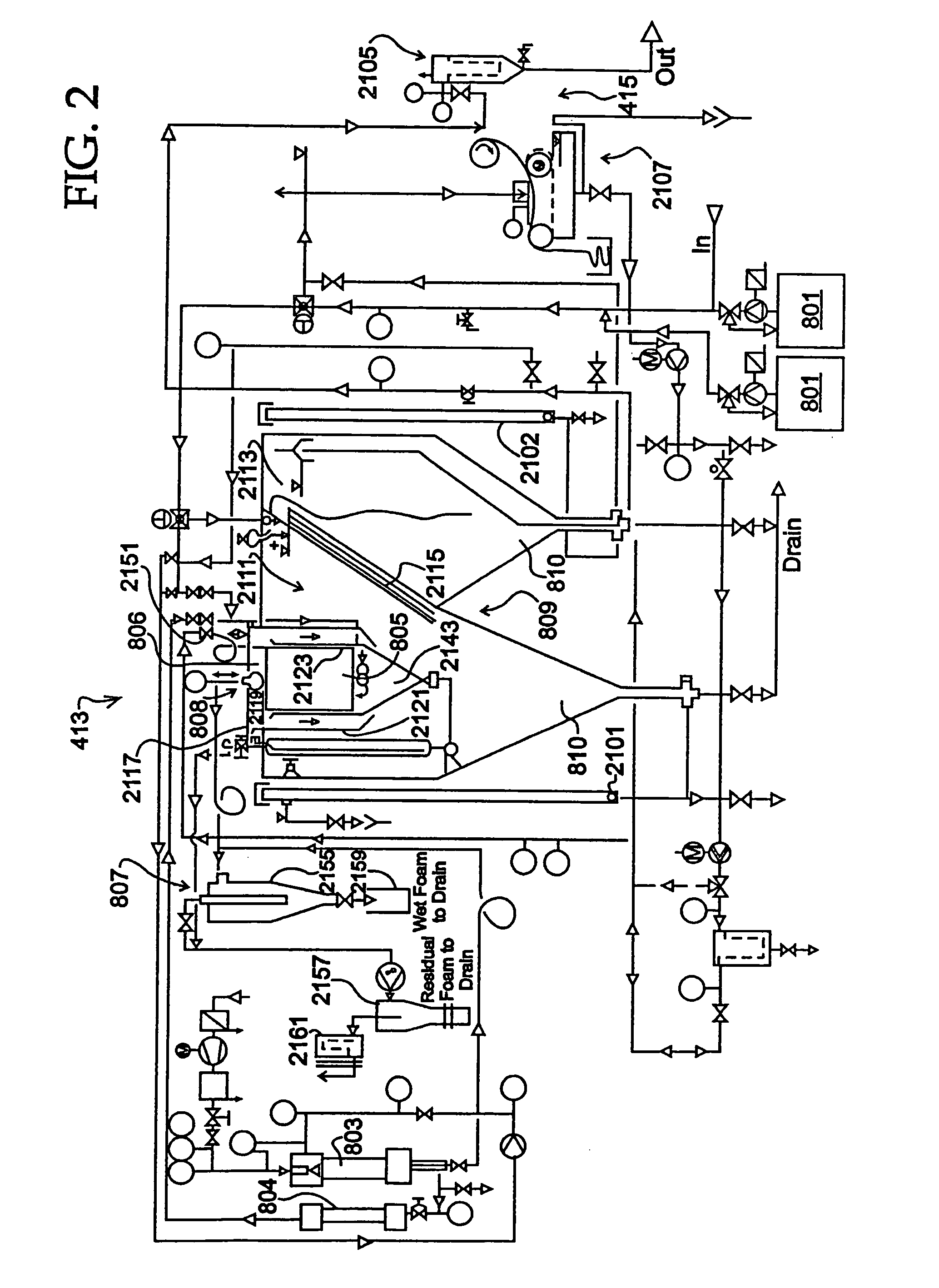Three phase electrocoagulation effluent treatment apparatus and methods
a technology of effluent treatment and electrocoagulation, applied in multi-stage water/sewage treatment, water/sewage treatment by degassing, water/sewage treatment water nature, etc., can solve the problems of large floor space, not all effluent treatment requires the same technology, and affects ongoing operations financially and operational continuity. , to achieve the effect of enhancing equipment and plant efficiency and reliability, reducing maintenance and plant floor space requirements
- Summary
- Abstract
- Description
- Claims
- Application Information
AI Technical Summary
Benefits of technology
Problems solved by technology
Method used
Image
Examples
Embodiment Construction
[0022]FIG. 1 shows effluent treatment apparatus (in this case a pre-treatment suite) 413. These include pH and chemical dosing apparatus 801 and 802, respectively, ODE / IDI membrane aeration apparatus 803, electrocoagulation apparatus 805, dissolved air / gas flotation 806, vacuum introduced cyclone separation apparatus 807, vacuum degassing 808, lamella plate clarification 809 and sludge concentration output 810. Additionally, eight testing nodes 811 through 825 are shown.
[0023]The primary function of pre-treatment suite 413 is the removal or significant reduction (exceeding 90%) of colloidal matter with total suspended solids, such as polysaccharides or other slimy matter, less than about 75 nm. In addition, removal or significant reduction (by 80 to 90%) of fats, grease, oils and emulsions, and heavy metals (such as barium, strontium and others) by 60 to 99% is achievable. Finally, removal of entrained and produced gas by vacuum down to residual levels is achieved.
[0024]Regarding bo...
PUM
| Property | Measurement | Unit |
|---|---|---|
| chamber angle of repose | aaaaa | aaaaa |
| frequency | aaaaa | aaaaa |
| length | aaaaa | aaaaa |
Abstract
Description
Claims
Application Information
 Login to View More
Login to View More - R&D
- Intellectual Property
- Life Sciences
- Materials
- Tech Scout
- Unparalleled Data Quality
- Higher Quality Content
- 60% Fewer Hallucinations
Browse by: Latest US Patents, China's latest patents, Technical Efficacy Thesaurus, Application Domain, Technology Topic, Popular Technical Reports.
© 2025 PatSnap. All rights reserved.Legal|Privacy policy|Modern Slavery Act Transparency Statement|Sitemap|About US| Contact US: help@patsnap.com



